Bold Reviews of Classic Films: Candid Takes & Top Picks
Category: Film & Cinema
Dive Into Bold Reviews of Classic Films
If you're a passionate movie enthusiast who craves candid, unfiltered opinions on timeless films, you've just hit the right spot. This post is crafted especially for cinephiles who don’t settle for generic praises or surface-level recommendations. Maybe you've scoured forums and classic film blogs searching for fresh, bold perspectives that cut through the typical hype. Or perhaps you feel inundated by overly cautious reviews that don't challenge your views or help you discover films outside your comfort zone.
We understand your hunger for authentic, genre-spanning insights — from film noir masterpieces to heartfelt romances and sweeping historical epics. Unlike standard reviews that tiptoe around flaws or sugarcoat narratives, this post brings you raw, energetic critiques coupled with personalized recommendations designed to challenge and enrich your film-watching journey.
Here, you’ll find a structured exploration covering what makes bold classic film reviews truly resonate with discerning audiences, how to interpret the evolving cultural impact of these movies, and curated picks that embrace flaws as much as brilliance. So settle in to explore a fresh take on classic cinema that respects your expertise and ignites your passion. Ready to change how you experience the classics? Keep reading.
- Dive Into Bold Reviews of Classic Films
- Defining Bold Reviews: What Sets Them Apart from Traditional Classic Film Critiques
- Historical Context & Modern Relevance: Reassessing Classics with a Contemporary Lens
- Breaking Down Genre Stereotypes: Bold Critiques Across Film Noir, Romance, Westerns & More
- Highlighting Flaws and Triumphs: Why Honest Appraisal Matters
- Iconic Performances Under the Microscope: Bold Takes on Legendary Acting
- Unpacking Cinematic Techniques: Bold Insights into Direction, Cinematography & Score
- Spotlighting Underrated or Overlooked Classics: Hidden Gems and Controversial Favorites
- Personalized Recommendations Based on Bold Reviews: Curated Viewing Guides for Every Mood and Taste
- The Role of Viewer Interpretation in Bold Reviews: Encouraging Critical Thinking and Discussion
- How to Write Your Own Bold Review: Tips for Passionate Cinephiles Who Want to Share Authentic Opinions
Defining Bold Reviews: What Sets Them Apart from Traditional Classic Film Critiques
Bold reviews of classic films are fearless, unfiltered, and refreshingly honest—qualities that distinguish them sharply from traditional critiques that often cling to safe, universally accepted narratives. Unlike conventional reviews, which may prioritize reverence over critique, bold analyses don’t hesitate to dissect flaws, highlight controversial themes, or question the cultural impact of even the most celebrated classics. This approach challenges die-hard fans and casual viewers alike to re-examine beloved movies through a more critical and nuanced lens.
Key characteristics that define bold classic film reviews include:
- Uncompromising Honesty: Rather than glossing over imperfections, bold reviewers embrace complexity, addressing problematic elements such as outdated stereotypes, pacing issues, or directorial missteps.
- Contextual Courage: These reviews dive deeper than plot and performances, exploring how classic films reflect or clash with contemporary values and social norms—sometimes exposing uncomfortable truths.
- Genre-Bending Perspectives: Bold critiques resist pigeonholing films within a single genre lens, instead appreciating multifaceted aspects like subtext, symbolism, and technical innovation.
- Personalized Voice: They prioritize authentic, strong viewpoints that resonate personally with audiences hungry for more than bland consensus.
- Narrative Disruption: Bold reviews refuse to reinforce mainstream narratives unquestioningly; they provoke fresh conversations about films that have long been deemed "untouchable."
By daring to critique classics unapologetically, bold reviews offer a richer, more engaging experience—helping cinephiles discover new layers in old favorites and inviting everyone to embrace a fuller spectrum of cinematic artistry.
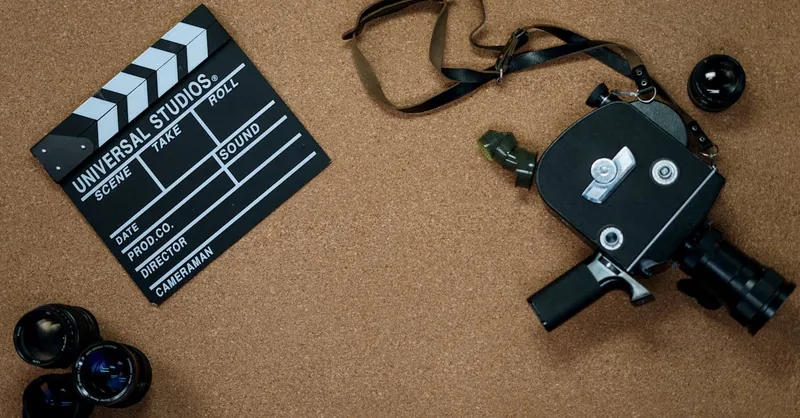
Image courtesy of cottonbro studio
Historical Context & Modern Relevance: Reassessing Classics with a Contemporary Lens
Understanding the socio-political background of classic films is crucial for unearthing the layers beneath their storytelling and artistic choices. Many timeless movies were crafted within specific cultural and historical moments that shaped their themes, character portrayals, and narrative decisions. By exploring the context—such as the impact of war eras, civil rights movements, or shifts in gender roles—viewers can appreciate not only what these films meant at the time but also how they challenged or reinforced prevailing societal norms. This historical awareness enhances bold reviews by revealing why certain motifs resonate or clash with today's values, enabling a richer, more informed critique.
Moreover, reassessing classic films through a contemporary lens is essential for evaluating their ongoing relevance. Many classics contain themes or representations that may seem outdated or controversial by modern standards, raising important questions about legacy and cultural sensitivity. Bold reviews don’t shy away from these difficult discussions; instead, they illuminate how classic films continue to influence modern cinema and popular culture, while also inviting audiences to critically engage with their messages. This dual approach—honoring historical context while scrutinizing present-day resonance—cultivates a dynamic dialogue that keeps classic cinema vibrant, challenging, and meaningful for today’s viewers.
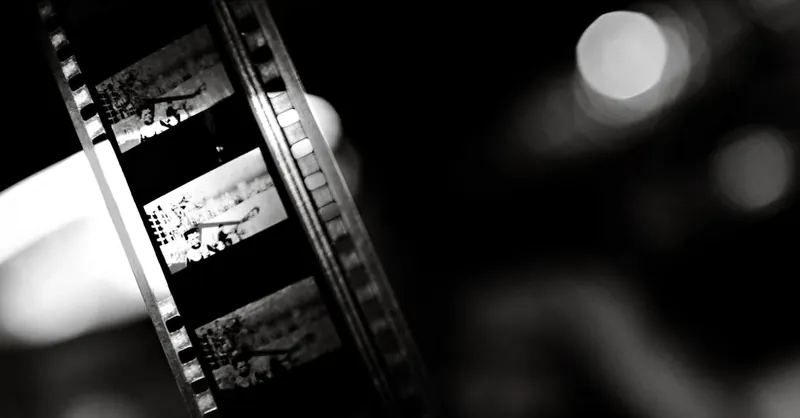
Image courtesy of DΛVΞ GΛRCIΛ
Breaking Down Genre Stereotypes: Bold Critiques Across Film Noir, Romance, Westerns & More
One of the defining strengths of bold classic film reviews lies in their fearless approach to dissecting and dismantling entrenched genre stereotypes that have long shaped audience expectations. Whether it’s the shadowy femme fatales of film noir, the idealized love stories in classic romances, or the archetypal rugged heroes of Westerns, these reviews challenge the conventions that often oversimplify characters and narratives. By spotlighting the nuances and contradictions within these genres, bold critics reveal how clichés can both serve and limit storytelling.
Take film noir, for example. Bold reviewers don’t just celebrate the genre’s stylistic darkness or moral ambiguity—they scrutinize how the portrayal of women frequently oscillates between empowerment and objectification, calling out outdated gender dynamics while appreciating subversive elements that defy easy categorization. Similarly, when revisiting classic romance films, bold critiques highlight how conventional narratives about love can sometimes perpetuate unrealistic ideals or marginalize diverse experiences, advocating for a more inclusive understanding of romance on screen. In the realm of Westerns, which historically lionize masculine dominance and frontier mythology, bold reviews expose how these films often ignore indigenous perspectives or gloss over historical complexities, prompting a necessary re-evaluation of cultural narratives.
By deconstructing genre tropes with an unflinching eye, bold film critiques empower viewers to engage with classics in a more critical and discerning way. This process not only enriches appreciation for the artistry and innovation within each genre but also promotes a more nuanced discourse surrounding representation, ideology, and cinematic legacy. Ultimately, such reviews pave the way for discovering overlooked gems, acknowledging problematics without dismissing artistic merit, and inspiring a fresh conversation about what these genres can—and should—offer modern audiences.
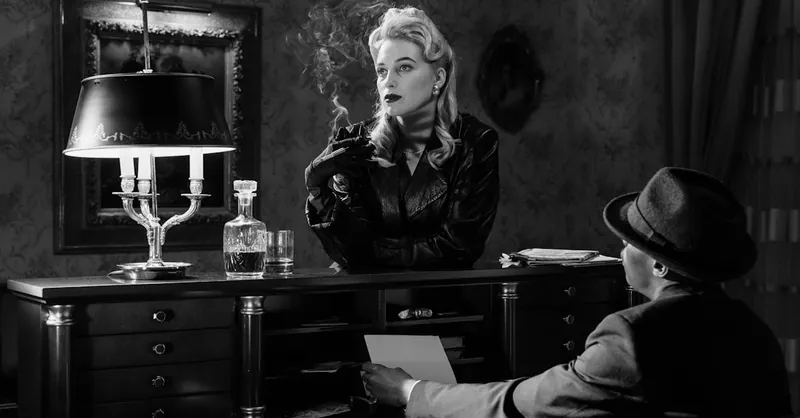
Image courtesy of cottonbro studio
Highlighting Flaws and Triumphs: Why Honest Appraisal Matters
In the realm of classic films, honest appraisal is not merely about pointing out imperfections—it’s about balancing critique with celebration to offer a deeper, more authentic understanding of cinematic art. Classic films often carry a revered status that can obscure their drawbacks, from outdated social attitudes to narrative inconsistencies. Bold reviews acknowledge these flaws openly, inviting audiences to engage critically without dismissing the film’s artistic or cultural achievements. This balanced approach enriches viewer appreciation by recognizing that even masterpieces may contain problematic elements or technical shortcomings that deserve scrutiny.
Celebrating a film’s triumphs alongside its flaws is equally vital. Whether it's groundbreaking performances, innovative direction, or enduring emotional impact, these successes illustrate why classics have stood the test of time. Furthermore, acknowledging achievements helps preserve the cultural significance of these films while fostering respectful dialogues about their limitations. Ultimately, honest and nuanced critiques cultivate a more informed and passionate cinephile community—one that values complexity over blind adoration and understands that recognizing imperfections does not diminish a film’s legacy, but rather enhances its relevance for modern audiences.
The Benefits of Balanced Film Criticism
- Promotes critical thinking: Encourages viewers to analyze films beyond surface-level appreciation.
- Fosters cultural sensitivity: Opens conversation about problematic representations and evolving social values.
- Preserves artistic integrity: Honors innovative craftsmanship even when narrative or thematic elements falter.
- Inspires diverse perspectives: Invites fresh interpretations and dialogues that challenge canonical viewpoints.
By embracing both flaws and triumphs, bold classic film reviews provide an honest roadmap for experiencing these cultural touchstones with fresh eyes and fuller appreciation.

Image courtesy of cottonbro studio
Iconic Performances Under the Microscope: Bold Takes on Legendary Acting
When discussing classic films, the performances of iconic actors often serve as the very heart of cinema’s enduring legacy. Yet, many traditional reviews tend to idolize these performances without question, overlooking complex nuances or problematic elements that deserve candid exploration. Bold reviews of legendary acting seize the opportunity to celebrate undeniable talent while fearlessly scrutinizing the choices, style, and cultural impact of these performances—whether that means recognizing groundbreaking portrayals or challenging outdated acting conventions that have shaped movie history.
Celebrating Actors Who Redefined Their Craft
Many classic actors revolutionized film acting by bringing unprecedented subtlety, intensity, or charisma to the screen. Bold critiques highlight such contributions by:
- Analyzing technique: Exploring how performances broke new ground—whether through method acting, nuanced emotional depth, or commanding screen presence—that influenced generations of actors.
- Contextualizing impact: Examining how iconic portrayals resonated with contemporary audiences and challenged social norms, paving the way for more complex characters.
- Appreciating range: Recognizing versatility across genres or the ability to transcend typecasting, illustrating why some performances remain timeless.
For example, scrutinizing Humphrey Bogart’s rugged ambiguity or Bette Davis’s fierce vulnerability goes beyond praise to unpack how their acting choices shaped character archetypes and narrative expectations.
Questioning Performances That Haven't Aged Gracefully
Bold reviews also confront legendary performances that, while once celebrated, feel problematic or performative by today’s standards. This includes:
- Exposing stereotypes: Calling out portrayals steeped in racial, gender, or cultural stereotypes that reflected and reinforced harmful prejudices.
- Critiquing stylistic excess: Identifying moments of overacting or theatricality that clash with modern sensibilities of realism and subtlety.
- Examining cultural impact: Reflecting on how a star’s persona might have overshadowed character depth or perpetuated industry biases.
By questioning these aspects, fearless critiques enrich understanding of cinematic history, encouraging viewers to appreciate artistry without masking problematic legacies.
Why Bold Performance Reviews Matter
- Elevate film literacy: They sharpen audiences’ ability to read nuanced performances critically, enhancing overall appreciation.
- Champion diversity of opinion: Encouraging debate over canonized acting moments prevents stagnation in film culture.
- Connect past and present: Bold appraisals reveal how acting styles reflect their eras and influence ongoing evolving performance paradigms.
In dissecting iconic performances with unflinching honesty and respect, bold reviews deepen our engagement with classic films—offering fresh insights that both honor legendary actors and push critical conversations forward in meaningful ways.
Image courtesy of cottonbro studio
Unpacking Cinematic Techniques: Bold Insights into Direction, Cinematography & Score
A truly bold review doesn’t stop at plot or performance; it dives headfirst into the cinematic techniques that shape the very soul of classic films. Whether a director’s visionary style, innovative camera work, or a memorable musical score, these elements collectively define the movie’s artistic footprint and emotional impact. However, bold critiques assess these aspects not just through admiration but also with critical precision—highlighting when techniques feel revolutionary, dated, or even distracting, thus offering a fuller understanding of a film’s craftsmanship and legacy.
Direction: Visionary or Overindulgent?
Directors are the architects behind every classic film’s visual storytelling. Bold reviews distinguish between films where direction elevates material—through tight pacing, effective tone, and distinct style—and those where a director’s choices may overwhelm or muddle the narrative. A fearless critique might praise Alfred Hitchcock’s masterful suspense-building while questioning mid-century directors who relied heavily on stylistic flourishes that now appear overwrought or resistant to modern pacing expectations. Examining a director’s creative decisions through a contemporary lens exposes how visionary techniques either withstand the test of time or reveal their era-bound limitations.
Cinematography: From Groundbreaking Shots to Nostalgic Artifacts
Cinematography in classic films often showcases pioneering use of lighting, framing, and camera movement that inspired generations. Bold reviews dissect how these techniques contribute to mood, symbolism, and storytelling—like the striking chiaroscuro contrasts in film noir or sweeping widescreen landscapes in Westerns. But equally important is recognizing when certain visual choices feel mechanical, overly stagebound, or fail to serve narrative clarity. By weighing innovation against dated conventions, bold critiques guide audiences to appreciate how cinematography shapes not just aesthetics but also viewer engagement and emotional resonance.
Score and Sound Design: Emotional Backbone or Distracting Relic?
A film’s score can either elevate scenes into unforgettable cinematic moments or become an intrusive distraction. Bold film reviews evaluate iconic scores—such as Bernard Herrmann’s chilling compositions or Max Steiner’s sweeping melodies—not simply for their era-defining status but for how well they endure emotionally and tonally today. Moreover, sound design elements, often overlooked, play a crucial role in immersion. Critics with a bold approach assess whether the audio choices enhance atmosphere and storytelling or betray technical limitations of the period, offering insights into how sound remains a powerful yet sometimes underappreciated cinematic tool.
By unpacking direction, cinematography, and score with a critical eye that balances technical appreciation and constructive scrutiny, bold reviews unlock hidden layers of classic films. This analytical rigor not only enriches viewing experiences but also elevates your understanding of how filmmaking techniques shape timeless stories—both celebrating innovation and candidly confronting the dated facets that invite fresh reassessment.
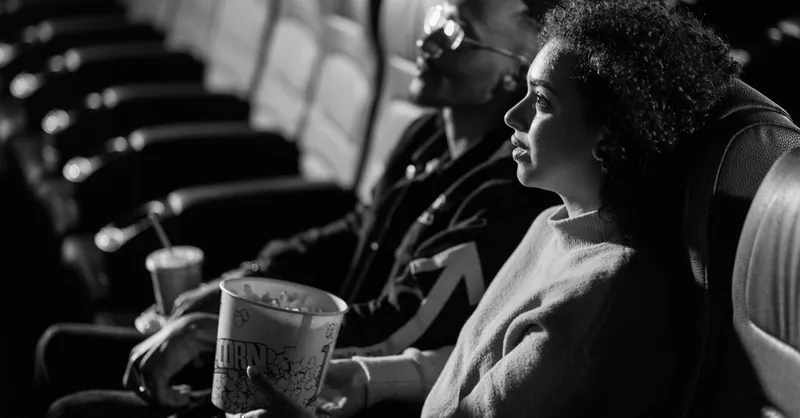
Image courtesy of Pavel Danilyuk
Spotlighting Underrated or Overlooked Classics: Hidden Gems and Controversial Favorites
While iconic classics often dominate the conversation, bold reviews excel at unearthing underrated or overlooked films that deserve a second look. These hidden gems challenge mainstream narratives by revealing cinematic treasures obscured by time, niche appeal, or mixed initial receptions. From provocative arthouse titles to genre mashups ahead of their time, these films reward viewers willing to venture beyond the usual canon with fresh storytelling, innovative techniques, or daring themes that remain surprisingly relevant today.
Moreover, bold critiques take pride in revisiting controversial favorites—films that sparked heated debates upon release or continue to divide audiences. Rather than shying away from their polarizing nature, these reviews dissect the factors contributing to controversy—whether it’s provocative content, unconventional narrative structure, or challenging social commentary—while weighing the films’ artistic merits against public reception. This fearless approach empowers cinephiles to engage with these classics on their own terms, fostering deeper understanding and promoting a nuanced appreciation that transcends conventional acclaim.
Why Spotlighting These Titles Matters
- Expands cinematic horizons: Introducing lesser-known works encourages viewers to explore beyond widely celebrated films and enrich their film literacy.
- Challenges canon formation: Bold reviews question the gatekeeping of classic film canons, highlighting diversity in style, storytelling, and cultural backgrounds.
- Encourages fresh dialogues: Re-examining overlooked and divisive films invites dynamic discussions around changing tastes, morals, and cinematic values.
- Unearths innovation: Many underrated classics showcase pioneering storytelling or technical experimentation underappreciated in their time.
By championing these hidden and controversial classics, bold reviewers invigorate classic film discourse, ensuring that cinematic history remains dynamic, inclusive, and thought-provoking—perfect for discerning audiences hungry for authentic, fearless film recommendations.
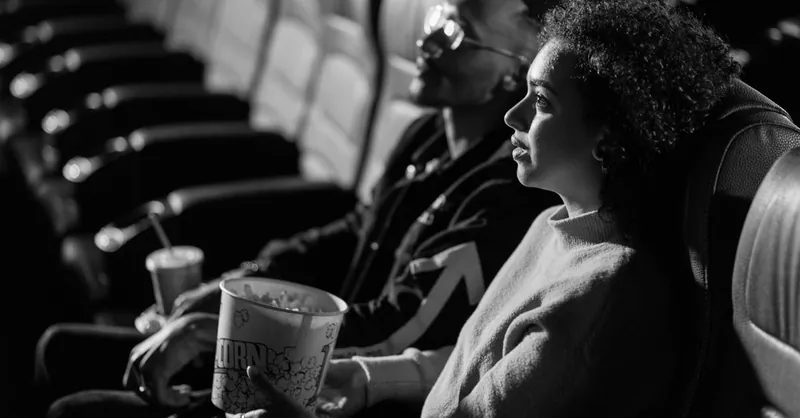
Image courtesy of Pavel Danilyuk
Personalized Recommendations Based on Bold Reviews: Curated Viewing Guides for Every Mood and Taste
One of the standout benefits of bold, unfiltered classic film reviews is their ability to inform highly personalized movie recommendations that cater to diverse moods, tastes, and viewing preferences. Unlike generic “top 10” lists that often recycle the same acclaimed titles, these curated guides leverage candid critiques to connect viewers with classics that truly resonate on a deeper level—whether you’re seeking genre-defying surprises, thematically rich dramas, or provocative films that spark conversation. By embracing the full spectrum of a film’s strengths and shortcomings, bold reviews empower you to make informed choices tailored to your unique cinematic appetite.
How Bold Reviews Shape Customized Viewing Experiences
- Mood-Driven Curation: Bold critiques identify films that align with specific emotional states or thematic interests—offering, for example, noir thrillers rich with moral ambiguity for introspective moods, or heartfelt romances with complex character dynamics for a night of emotional engagement.
- Taste-Specific Selection: By highlighting nuanced genre elements, groundbreaking performances, or distinctive directorial styles, these recommendations match the viewer’s preferred cinematic flavors—whether that's gritty realism, stylistic flamboyance, or subtle social commentary.
- Acknowledgment of Flaws: Personalized picks don’t shy away from advising viewers about a film’s challenging aspects or dated content, allowing cinephiles to enter the experience with realistic expectations and an appetite for critical engagement.
- Broadening Horizons: Bold reviews often recommend underrated or controversial classics that defy mainstream taste, encouraging adventurous viewers to expand their collection beyond conventional favorites.
Why Customized, Boldly Informed Guides Matter
- Enhances Engagement: Tailored recommendations grounded in fearless critique ensure that every film choice feels intentional and rewarding.
- Builds Viewing Confidence: Honest insights cultivate trust between reviewers and audiences, helping fans discover classics without disappointment or bland consensus.
- Supports Diverse Audiences: From die-hard cinephiles to casual viewers craving something different, these guides respect and nurture varying levels of film knowledge and interest.
- Sparks Meaningful Conversations: Films selected for bold qualities often trigger thought-provoking discussions, deepening the social and cultural value of your viewing experience.
By synthesizing uncensored critical analysis with an understanding of audience preferences, personalized recommendations courtesy of bold classic film reviews transform your movie nights into explorations of cinema’s rich, layered history—perfectly matched to whatever mood you’re in or style you seek. This approach ensures that classic films remain vibrant, relevant, and thrilling long after their initial release.
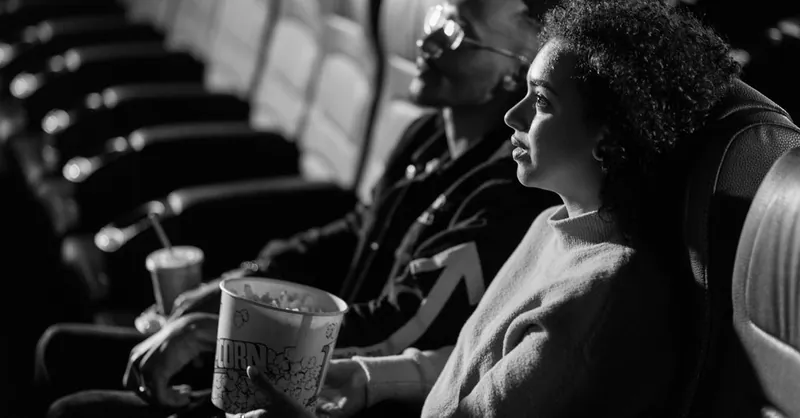
Image courtesy of Pavel Danilyuk
The Role of Viewer Interpretation in Bold Reviews: Encouraging Critical Thinking and Discussion
A hallmark of bold classic film reviews is their invitation to audiences to actively engage with cinema beyond passive consumption. These unfiltered critiques emphasize that meaning is not fixed solely by filmmakers or critics but is dynamically shaped by individual viewer interpretation. By presenting candid observations—both laudatory and critical—bold reviews encourage viewers to think deeply about the themes, characters, and cultural contexts of classic films, empowering them to form their own nuanced opinions rather than accepting established narratives at face value.
This approach fosters a rich environment for critical thinking and meaningful discussion. Bold reviews challenge viewers to question why certain elements resonate or jar with contemporary sensibilities, prompting debates around issues such as representation, morality, and artistic merit. By embracing diverse perspectives and acknowledging ambiguity, these critiques dismantle passive fandom in favor of an engaged, thoughtful audience. Encouraging viewers to decode symbolism, question genre conventions, and reconsider historical context ultimately enriches the cinematic experience and cultivates a more informed, vibrant film community.
How Viewer Interpretation Elevates Film Appreciation
- Stimulates Active Engagement: Instead of offering definitive judgments, bold reviews spark curiosity and independent analysis.
- Builds Personal Connections: Viewers reflect on how films relate to their own experiences and beliefs, deepening emotional impact.
- Enables Diverse Perspectives: Open interpretation welcomes varied cultural, social, and generational viewpoints, challenging monolithic readings.
- Promotes Ongoing Dialogue: Bold critiques act as catalysts for conversations that extend beyond the screen, keeping classic films culturally relevant.
By prioritizing viewer interpretation, bold reviews transform classic movies from static artifacts into living works of art—encouraging critical thinking, sparking passionate discussions, and empowering cinephiles to become thoughtful participants in the evolving legacy of cinema.
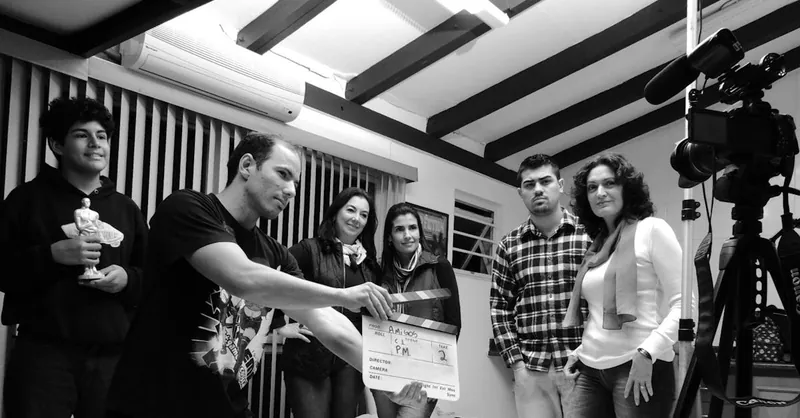
Image courtesy of Pixabay
How to Write Your Own Bold Review: Tips for Passionate Cinephiles Who Want to Share Authentic Opinions
If you’re eager to join the ranks of fearless film critics and share your unfiltered, passionate voice on classic cinema, crafting a bold review starts with embracing honesty and depth over safe generalities. Writing a genuinely bold review means moving beyond plot summaries and standard praise to deliver thought-provoking analysis that challenges both yourself and your readers. Here are essential tips to help passionate cinephiles formulate reviews that stand out and contribute meaningfully to classic film discourse:
- Watch Actively and Take Notes: Immerse yourself fully in the film, noting not only story and performances but also thematic nuances, historical context, technical elements, and moments that provoke strong reactions. Identifying both strengths and flaws sharpens your perspective.
- Embrace Nuance and Complexity: Avoid black-and-white judgments. Recognize a film’s artistic triumphs alongside its problematic aspects, such as outdated social attitudes, pacing issues, or uneven direction. Bold reviews honor complexity by balancing critique with appreciation.
- Ground Opinions in Context: Situate your analysis within the film’s production era, cultural climate, and genre conventions. Explaining how these factors influence the movie’s content and reception enriches your critique and informs readers.
- Use a Distinctive, Personal Voice: Inject your unique viewpoint and enthusiasm into your writing. Bold reviews resonate because they convey the reviewer’s authentic reactions, sparking connection with readers who crave sincerity.
- Challenge Canonical Narratives: Don’t hesitate to question widely held assumptions or popular acclaim. Offer fresh takes that encourage reevaluation—whether by highlighting overlooked flaws or spotlighting underrated facets.
- Support Claims with Examples: Back your interpretations and critiques with specific scenes, dialogue, or cinematic techniques. Concrete evidence strengthens credibility and invites readers to engage with your reasoning.
- Encourage Reader Dialogue: End your review with open-ended questions or invitations for discussion. Bold criticism thrives on dynamic exchange and diverse viewpoints within the cinephile community.
By cultivating these practices, you’ll craft bold, insightful reviews that enrich classic film conversations and inspire fellow cinephiles to think critically and passionately about the movies they love—exactly the kind of unfiltered analysis our film culture needs. Whether your focus is genre dynamics, performance, or cultural impact, embracing honesty and nuance ensures your voice contributes powerfully to the evolving legacy of classic cinema.
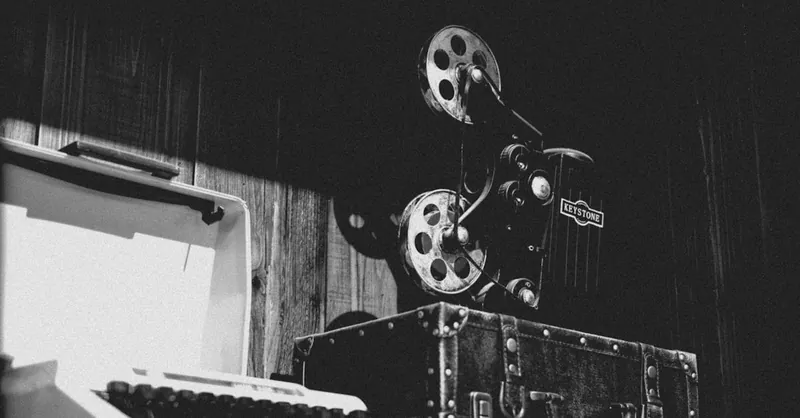
Image courtesy of HYRLF meng
